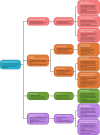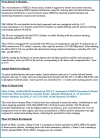Discovery of nanobodies: a comprehensive review of their applications and potential over the past five years
- PMID: 39455963
- PMCID: PMC11515141
- DOI: 10.1186/s12951-024-02900-y
Discovery of nanobodies: a comprehensive review of their applications and potential over the past five years
Abstract
Nanobodies (Nbs) are antibody fragments derived from heavy-chain-only IgG antibodies found in the Camelidae family as well as cartilaginous fish. Their unique structural and functional properties, such as their small size, the ability to be engineered for high antigen-binding affinity, stability under extreme conditions, and ease of production, have made them promising tools for diagnostics and therapeutics. This potential was realized in 2018 with the approval of caplacizumab, the world's first Nb-based drug. Currently, Nbs are being investigated in clinical trials for a broad range of treatments, including targeted therapies against PDL1 and Epidermal Growth Factor Receptor (EGFR), cardiovascular diseases, inflammatory conditions, and neurodegenerative disorders such as Alzheimer's disease, Parkinson's disease, and amyotrophic lateral sclerosis. They are also being studied for their potential for detecting and imaging autoimmune conditions and infectious diseases such as severe acute respiratory syndrome coronavirus 2 (SARS-CoV-2). A variety of methods are now available to generate target-specific Nbs quickly and efficiently at low costs, increasing their accessibility. This article examines these diverse applications of Nbs and their promising roles. Only the most recent articles published in the last five years have been used to summarize the most advanced developments in the field.
Keywords: CRISPR; Cancer; Cardiovascular; Diagnosis; Display techniques; Infectious-disease; Nanobody; Nanobody-imaging; Neurogenerative; Neurogenerative diseases; Production.
© 2024. The Author(s).
Conflict of interest statement
The authors declare no competing interests.
Figures









Similar articles
-
NANOBODIES®: A Review of Diagnostic and Therapeutic Applications.Int J Mol Sci. 2023 Mar 22;24(6):5994. doi: 10.3390/ijms24065994. Int J Mol Sci. 2023. PMID: 36983063 Free PMC article. Review.
-
Nanobody in a Double "Y"-Shaped Assembly: A Promising Candidate for Lateral Flow Immunoassays.Anal Chem. 2024 May 7;96(18):7130-7137. doi: 10.1021/acs.analchem.4c00509. Epub 2024 Apr 28. Anal Chem. 2024. PMID: 38679866
-
Nanobody engineering for SARS-CoV-2 neutralization and detection.Microbiol Spectr. 2024 Apr 2;12(4):e0419922. doi: 10.1128/spectrum.04199-22. Epub 2024 Feb 16. Microbiol Spectr. 2024. PMID: 38363137 Free PMC article.
-
The Potential of Nanobodies for COVID-19 Diagnostics and Therapeutics.Mol Diagn Ther. 2023 Mar;27(2):193-226. doi: 10.1007/s40291-022-00634-x. Epub 2023 Jan 19. Mol Diagn Ther. 2023. PMID: 36656511 Free PMC article. Review.
-
Computational design and modeling of nanobodies toward SARS-CoV-2 receptor binding domain.Chem Biol Drug Des. 2021 Jul;98(1):1-18. doi: 10.1111/cbdd.13847. Epub 2021 May 13. Chem Biol Drug Des. 2021. PMID: 33894099 Free PMC article.
Cited by
-
Monoclonal nanobodies alter the activity and assembly of the yeast vacuolar H+-ATPase.bioRxiv [Preprint]. 2025 Jan 11:2025.01.10.632502. doi: 10.1101/2025.01.10.632502. bioRxiv. 2025. PMID: 39829782 Free PMC article. Preprint.
-
Harnessing Nanobodies for Precision Targeting of Proteoforms: Opportunities and Challenges in Therapeutics and Diagnostics.ACS Chem Biol. 2025 Aug 15;20(8):1817-1827. doi: 10.1021/acschembio.5c00329. Epub 2025 Jul 24. ACS Chem Biol. 2025. PMID: 40708125 Free PMC article. Review.
-
Advances in Molecular Imaging of VEGFRs: Innovations in Imaging and Therapeutics.Int J Mol Sci. 2025 Jun 4;26(11):5373. doi: 10.3390/ijms26115373. Int J Mol Sci. 2025. PMID: 40508182 Free PMC article. Review.
-
CD70: An emerging target for integrated cancer diagnosis and therapy.Clin Transl Med. 2025 Jul;15(7):e70400. doi: 10.1002/ctm2.70400. Clin Transl Med. 2025. PMID: 40629902 Free PMC article. Review.
-
Development of SNAP-Tag Based Nanobodies as Secondary Antibody Mimics for Indirect Immunofluorescence Assays.Cells. 2025 May 10;14(10):691. doi: 10.3390/cells14100691. Cells. 2025. PMID: 40422194 Free PMC article.
References
Publication types
MeSH terms
Substances
LinkOut - more resources
Full Text Sources
Research Materials
Miscellaneous

